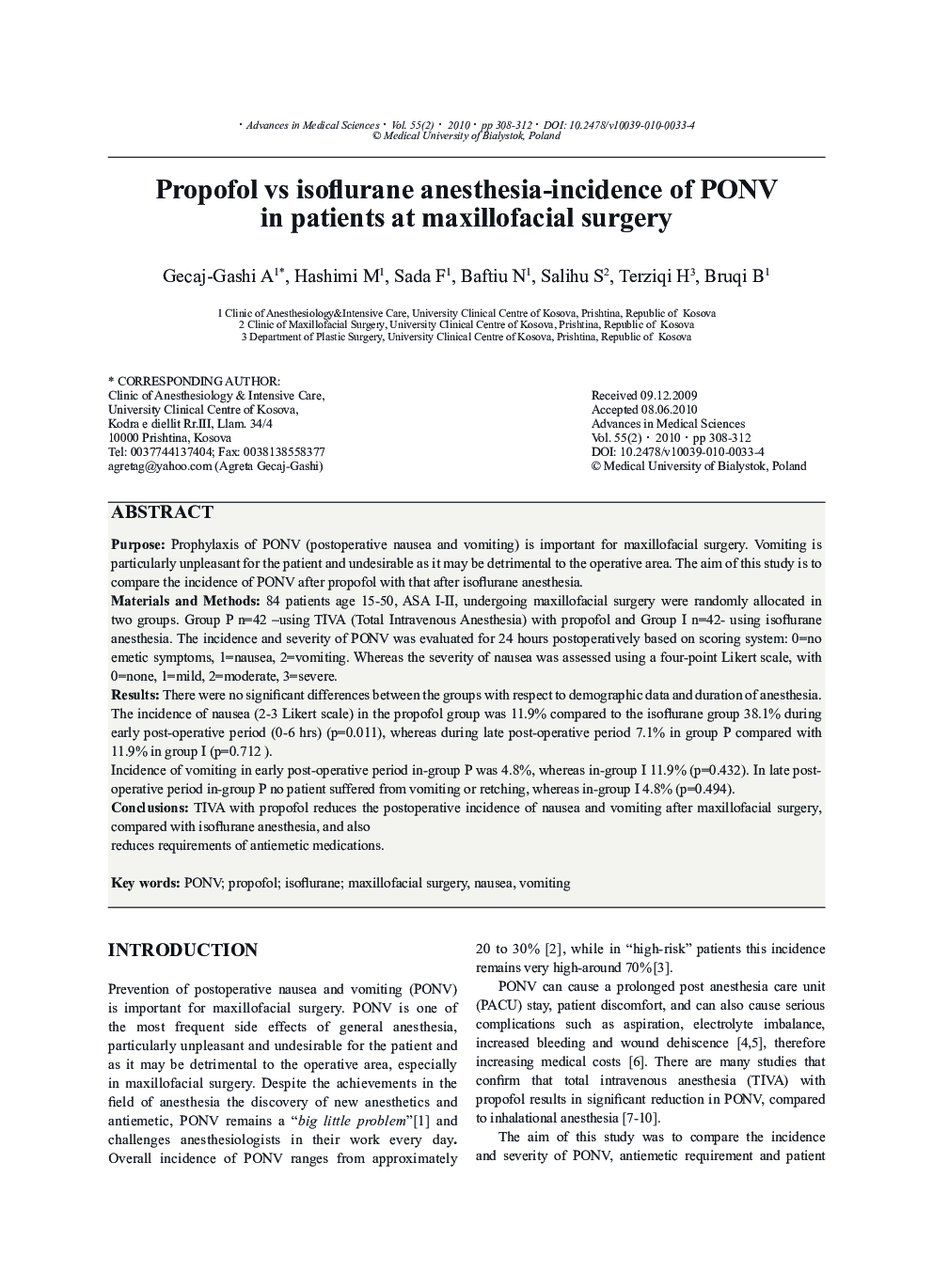| Article ID | Journal | Published Year | Pages | File Type |
|---|---|---|---|---|
| 2031880 | Advances in Medical Sciences | 2010 | 5 Pages |
ABSTRACTPurposeProphylaxis of PONV (postoperative nausea and vomiting) is important for maxillofacial surgery. Vomiting is particularly unpleasant for the patient and undesirable as it may be detrimental to the operative area. The aim of this study is to compare the incidence of PONV after propofol with that after isoflurane anesthesia.Materials and Methods84 patients age 15–50, ASA I-II, undergoing maxillofacial surgery were randomly allocated in two groups. Group P n=42 –using TIVA (Total Intravenous Anesthesia) with propofol and Group I n=42- using isoflurane anesthesia. The incidence and severity of PONV was evaluated for 24 hours postoperatively based on scoring system: 0=no emetic symptoms, 1=nausea, 2=vomiting. Whereas the severity of nausea was assessed using a four-point Likert scale, with 0=none, 1=mild, 2=moderate, 3=severe.ResultsThere were no significant differences between the groups with respect to demographic data and duration of anesthesia. The incidence of nausea (2–3 Likert scale) in the propofol group was 11.9% compared to the isoflurane group 38.1% during early post-operative period (0–6 hrs) (p=0.011), whereas during late post-operative period 7.1% in group P compared with 11.9% in group I (p=0.712).Incidence of vomiting in early post-operative period in-group P was 4.8%, whereas in-group I 11.9% (p=0.432). In late postoperative period in-group P no patient suffered from vomiting or retching, whereas in-group I 4.8% (p=0.494).ConclusionsTIVA with propofol reduces the postoperative incidence of nausea and vomiting after maxillofacial surgery, compared with isoflurane anesthesia, and also reduces requirements of antiemetic medications.
